Hideki "HUE" Kimura: Japanese-Filtered Western Culture
Since our first introduction to the Japanese label DELUXE, we’ve been huge fans of the work
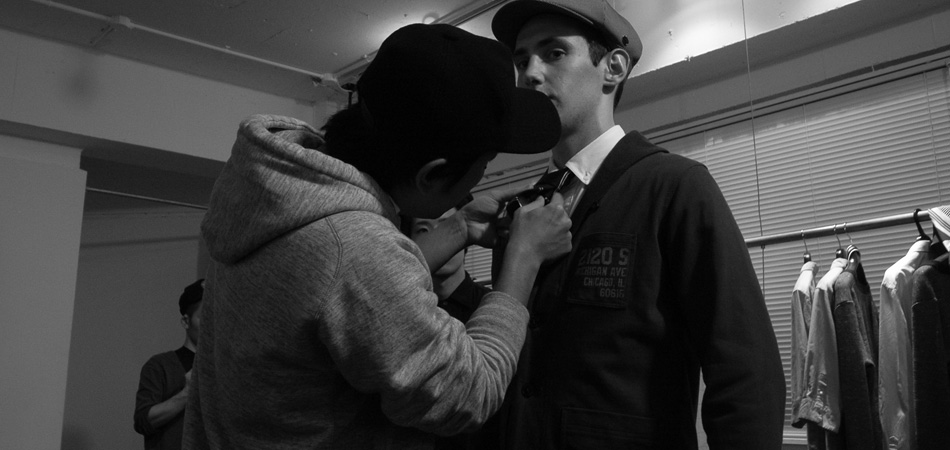
Since our first introduction to the Japanese label DELUXE, we’ve been huge fans of the work created by the brand’s head designer who simply goes by the nickname “HUE”. DELUXE’s greatest ability is the brand’s redefining of traditional staples. Whether it be something as simple as a button-up to a closet staple varsity jacket, the brand’s re-appropriation into a more modern and contemporary context is of few equals. Despite a strong penchant for inspirations taken from the mid-20th century, we can’t help but be fascinated with the brand’s attention to detail and the minute but not to be overlooked elements that make their apparel so inherently special.
As soft-spoken as he is dapper, our opportunity to speak with HUE enabled us to gain a greater understanding of the foundation of both HUE and DELUXE’s fashion inspirations. We also delve into some of the details behind both his current and upcoming collections with a behind-the-scenes look into their 2011 spring/summer collection.
Interview: Eugene Kan
Photography: Jey Perie
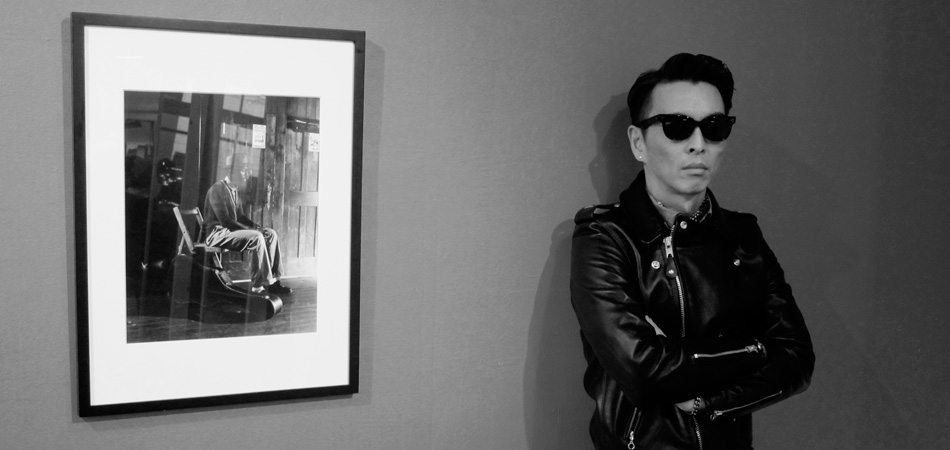
Interview with Hideki “HUE” Kimura
Could you please introduce yourself?
Hi, my name is Hideki “HUE” Kimura and I’m the head designer at DELUXE. Long story short, I was born and raised in the West side of Tokyo and after 3 years spent in New York in the late 90’s, I came back to Japan and started DELUXE. I’ve always been interested in fashion and street culture from a young age, but my experience in the US definitely instilled in me the confidence and the right frame of mind to start something here in Tokyo.
What are your personal inspirations?
Different aspect of my personal or social experience influence me and my approach to designing a collection. First of all, like other Japanese designers, I have been influenced by five decades of Western culture (mostly music and films). Since World War II, Japan has been under the cultural influence of America and Western culture in general and I grew up within that landscape. I would define it as Japanese-filtered Western culture. From food and sports to arts, movies and music, we usually add a twist of Japan into our definition of American culture. That’s what I believe makes Japan a unique place.
In addition, I often get inspired by my conversations and cultural exchanges with the older generations of designers and artists. They were the people I used to look up to when I was a teenager and I still learn a lot from them.
I derived a lot of knowledge and learned first hand about style, lifestyle and Western culture during my stay in New York in the late 90’s. New York has a unique sense of fashion and at that time it was real inspiring to witness such a diversity in style, color and influences.
What is it about the style in the mid 20th century (around the 1950s) that you really enjoy and appreciate?
The post-World War II era in the US and Europe is known for the birth of many subcultures and youth movements. It was a period of “new beginnings” with excitement and hope… definitely a very rich era both politically and culturally. In the States, the post-war decades were very prosperous and had given rise to individualism, and with it fashion demarcation and style development.
In addition, on a visual level, I really like the sexiness and the melancholic imagery with 50’s popular culture.
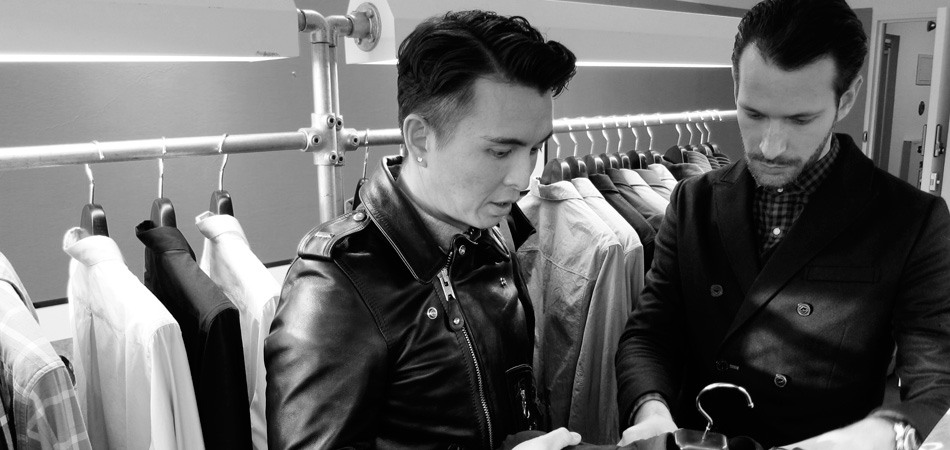
How do you approach the design process each season?
Themes and design are part of an ongoing process throughout the year. I usually start every season with a vision board of a theme that I would like to approach. I narrow it down every week until I reach a particular mood or aesthetic I want to work with. I take a lot of notes while designing each season and I always keep in mind unused bits for the next season in order to make the most of every idea, every design. For example I could come up with a great design for a winter jacket when designing my spring and summer collection collection and write it down.
In addition, I spent a lot of time digging around second hand and vintage shops in Tokyo and when I’m traveling abroad. You can find a lot of inspiration through the Internet by viewing thousands of images, photographs or designs but at the end of the day there is nothing more rewarding than finding a great piece of clothing in physical store and sharing your passion with retailers and peers.
Going further in-depth with each collection, do you have also have a sub-theme carried out?
Each collection has a general theme that could be divided in different subsequent tones and angles. I really enjoy working around those different approaches and it makes me happy to discuss it with my customer when they ask me about it. I like to compare each collection as a universe where it’s both diverse and homogeneous at the same time.
What are your greatest difficulties each season?
I would say that the hardest part of designing a collection is to balance out more that a hundred items in order to create a logical and consistent collection, sharing the same mood, the same theme and the same atmosphere. Each collection has to be balanced, in other words it has to make sense.
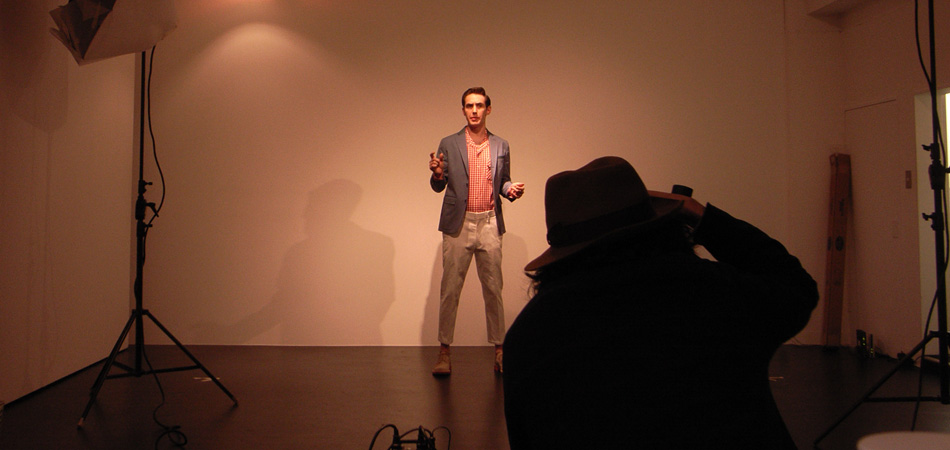
What do you enjoy designing the most?
I would say that outerwear design is what I find most enjoyable. With outerwear, I really enjoy the challenge of picking the right fabric, the lining colors as well as the overall technical aspect of outerwear.
What about looking beyond fashion? Is there anything you’d like to design?
I have a real interest in designing furniture. With DELUXE, I spend a lot of time building up a mood for each collection and I really enjoy this part of my work. But in addition, I also I believe that I can experience the same pleasure creating a mood or atmosphere by designing an entire room’s setting by creating a cohesive capsule of furniture.
For the most recent 2010 autumn/winter collection, where did your inspirations lie?
There are a handful of elements that have inspired me for our current autumn/winter 2010 Collection named “Rambler”. First, a visual inspiration comes courtesy of the iconic “The Wild One” movie staring Marlon Brando. I really wanted to play around the theme of the youth and group dynamics from the 50’s in post-war America.
As we look forward to 2011 spring/summer with parts of the look book seen here, what was the mood you were looking to achieve?
For this lookbook, we wanted to re-create a Midwest live music hall type of atmosphere paying tribute to the old Chicago Rock n’ Roll scene and artists such as Muddy Waters and Chuck Berry. I always aimed to recreate a certain aesthetic from a period of our past that I particularly enjoy and I try to adapt it to the modern day. Hopefully there’s an appeal for the current younger generations. That to me is the beauty of fashion, going back and forth from our rich past to the streets of our cities and mixing it up.
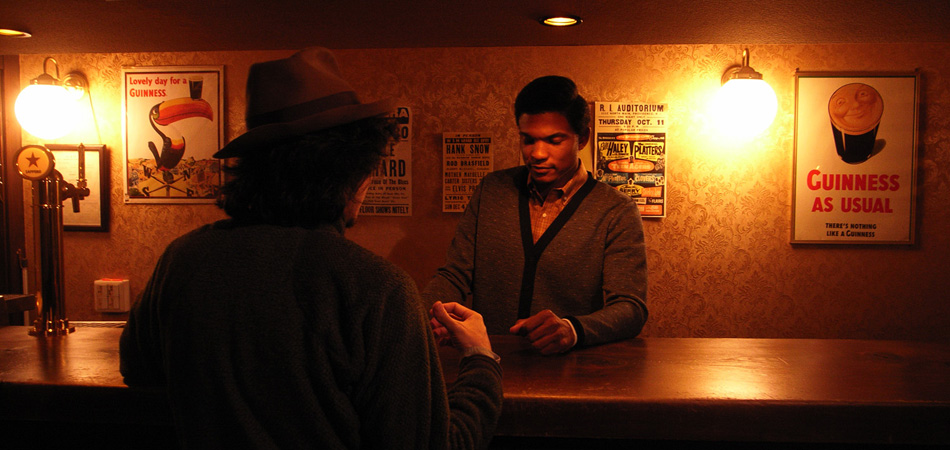
For the photoshoot, you brought on board well-known stylist Yohei Usami and photographer Taro Mizutani, why these two?
Yohei, Taro and Myself have been friends for years now and when it comes to understanding my vision they are always on point and perfectly in-sync with me.
It’s a pleasure for me to work with those two as I view them as highly talented creatives and it’s rewarding to see their growth in the industry. One of the greatest benefits for myself working in this industry is the ability to develop thoughts and creative inputs into a solid final product. I think this really stresses the notion that this is first and foremost a business of “people” and interaction.
As Deluxe gains momentum both inside and outside of Japan, how do you ensure the brand is well-received on foreign soils?
Every time I step foot out of Japan I get a lot of inspiration from people I meet from all walks of life. It’s very important to me to see how a younger generation carry themselves around the globe, from the way they style their outfit, the way they talk and communicate, it’s an endless study for me. When it comes to designing my collection, I try to keep all those factors in mind. Now that DELUXE has reached enjoyed wider exposure with customers in the US, Europe and Asia I try to be more open minded and create clothes that can be appreciated in Tokyo, New York or London.
As DELUXE makes its way outside of Japan, how do you look to tackle the potential garment sizing issues?
We pay a lot of attention to feedback from our overseas customers. We currently have a wide range of size from S to XL but the challenge I would say comes from the different body frame from our customers across the globe. Nowadays, It’s even more complex than a regional matter, we have Asian customers purchasing our clothing in North America and Europe; Whites and Blacks buying from our Asian retailers. The market is of a global nature but the size and fittings are far from being universal. Our duty is to create sizes that fits the broadest range of our consumers.
